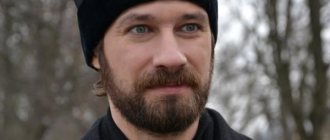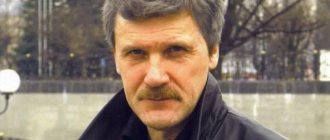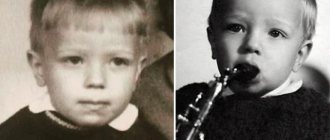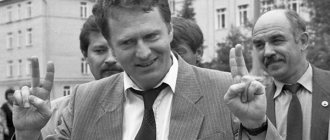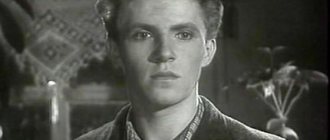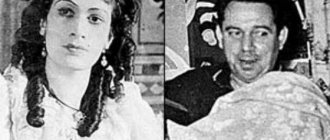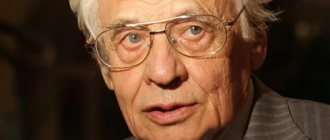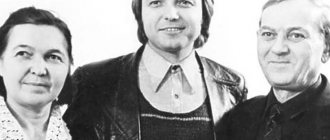- November 9, 2019
- Art
- Natalia Drong
Thousands of children in the Soviet Union were brought up on the music of Vladimir Yakovlevich Shainsky. The songs of this most talented composer - “The Blue Car” and “Song of the Crocodile Gena”, “Chunga-Chang” and “Clouds - White-Maned Horses”, “Mother for a Baby Mammoth” and “If You Hit the Road with a Friend” - are an integral part of the childhood of millions of citizens of the great countries.
And modern children and adults listen with great pleasure to and sing cheerful, easy-to-remember melodies composed by the famous Soviet and Russian composer.
At the beginning of your creative journey
Vladimir Shainsky was born on December 12, 1925 in Kyiv. At the age of 11, Volodya picked up the violin. Musical education at the ten-year school at the Kyiv Conservatory was interrupted by the Great Patriotic War. The Shainsky family was evacuated to Tashkent. Over time, Vladimir became a student at the Tashkent Conservatory. But the war again changed the plans of the talented young man. In 1943, Shainsky was drafted into the army. He serves as a signalman in Central Asia and begins to compose music. The young composer’s first work is called “Song of Military Signalmen.” It was during the war years that the creative biography of Vladimir Yakovlevich Shainsky began. The personal life of the young composer is still subordinated to a single occupation - playing music.
Interesting fact
Although the creative heritage of Vladimir Yakovlevich Shainsky allows him to be called a children's composer, he himself did not think so: “I am not a children’s composer. I don’t make any distinction in music between a pioneer and a pensioner.” Indeed, the musical language in his famous songs, for example in “Smile,” is far from childish. The song is quite complex from the point of view of harmony (one of the musical sciences). One could argue that this is the most ordinary song that every child knows and can sing, it is cheerful, joyful, and written in a major key! But not everything is so simple: already in the chorus there is a deviation (temporary transition to another key) in A minor. The chorus of the song is also written in a minor key. But this is the genius of the composer: such modal changes do not darken the song at all; it retains its bright character. Choosing a song on an instrument is not the easiest task due to the tonal plan. However, this does not prevent it from being one of the composer’s most recognizable and kind works.
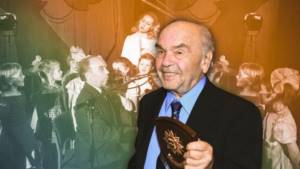
Vladimir Yakovlevich Shainsky is a composer who left us many cheerful songs, who taught us to dream, setting out on a journey with the clouds, and taught us to value friendship. Shainsky's biography and personal life are clear proof that you always need to remain a little child. And most importantly: not only with his creativity, but also with his personal example, he showed that it is necessary to smile, to give your joy, a smile to the world around you. After all, this is the only way to get a smile from the world in return...
In the Utesov Orchestra
Immediately after the end of the war, Vladimir Yakovlevich became a student at the orchestral department of the Moscow Conservatory. P.I. Tchaikovsky.
The period from 1949 to 1952 becomes special in Shainsky’s biography. The young musician works in the band of the legendary Leonid Osipovich Utesov.
Vladimir Yakovlevich always remembered this time with warmth. Utesov took fatherly care of the musicians of his orchestra. It was a great honor to play in this illustrious group. But Shainsky is becoming more and more interested in composing music. But the main work takes a lot of time and does not allow you to immerse yourself entirely in your favorite activity. After three years of working in a busy schedule, the aspiring composer decided to leave the orchestra. Utesov did not forcibly restrain Shainsky, but he also released him with obvious reluctance.
Classic genres
Probably not many people know that the composer also turned to purely classical genres. During his years of study at the Baku Conservatory, Shainsky wrote a quartet and a symphony. The biography of Shainsky, like any other composer, cannot do without these genres. But we shouldn’t forget that he was going to become a real serious composer. Vladimir Yakovlevich also wrote the opera “Three Against Marabuc”, but this opera is unusual... Like many other works, it was written for children.
Student at the Baku Conservatory
After working in the Utesov orchestra, Vladimir Yakovlevich teaches violin at a music school, works as an orchestrator, and leads various pop groups. And he continues to compose music.
The year 1962 is very significant for the creative biography of Vladimir Shainsky.
The young composer becomes a student at the Baku Conservatory, the leading higher musical educational institution in Azerbaijan. Shainsky learns the basics of composition from Kara Karaev, one of the largest Soviet composers, a student of Dmitry Shostakovich.
Personal life
In many ways, Vladimir Yakovlevich was a big child. It is no coincidence that he got along well with children and wrote wonderful children's songs. He was not very adapted to everyday life, devoting himself entirely to music. What does his biography tell us about his personal life?
After his first, still youthful marriage with Asya Sultanova (also a composer), which ended in divorce, Vladimir Shainsky began to arrange his personal life quite late. At first I tried to become, first of all, a successful composer. And he remarried only at 46 years old. The wife was 25 years younger than the composer. This marriage was not happy for the composer, the couple separated, but Vladimir Shainsky kept in touch with his son.
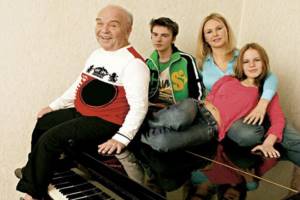
After some time, to the surprise of many, the composer married again. And this at 58 years old! And his wife was a full 40 years younger. Even more surprising is that the couple lived in perfect harmony for 30 years, and two children were born in the marriage. This is the personal biography of Vladimir Shainsky.
With a sense of humor about family life
The creative biography and personal life of Vladimir Yakovlevich Shainsky are inextricably linked. The talented composer often and recklessly fell in love, was inspired, and was married three times.
The musician’s first chosen one was a young colleague from the creative workshop, composer Asya Bakhish-kyzy Sultanova. They studied together at the conservatory. Asya Sultanova is the author of wonderful chamber and symphonic works and music for children. Sultanova’s song “Russia” completed significant concerts in the Kremlin Palace. Vladimir Yakovlevich maintained friendly relations with her until his last days.
Shainsky's second wife is Natalya Vasilievna. In this short marriage, a son, Joseph, was born in 1971. He did not follow the example of his outstanding father, but became a specialist in the equipment of military aircraft. Shainsky is proud of his son’s choice and achievements.
His third marriage, with Svetlana Vladimirovna Shainskaya, brought a lot of good things into the personal life of Vladimir Shainsky, whose biography is presented here. The famous composer easily won the heart of a 17-year-old girl. Svetlana was 41 years younger than her star husband. She worked as an accountant at the Union of Cinematographers. She was called Vladimir Yakovlevich’s guardian angel, an assistant in everything. In 1987, Svetlana and Vladimir had a son, Vyacheslav. He, like his father, works in the musical field - he is engaged in sound engineering, composes music, and writes poetry. Vyacheslav lives and works in Moscow.
In 1991, the Shainsky couple gave birth to their long-awaited daughter Anna. The girl is a graduate of the University of California at Berkeley, studying linguistics.
The personal life of Vladimir Shainsky was filled with true happiness and love. The biography and career of the composer is a vivid example of the life of a person capable of sharing joy and optimism with others.
Vladimir Yakovlevich ironically emphasized that the most important thing in his relationship with Svetlana was the lightness of his character, the angelic patience of his wife and their common sense of humor. The couple often communicated in their own special language, which emerged over many years of marriage. Often this language was incomprehensible even to the Shainsky children.
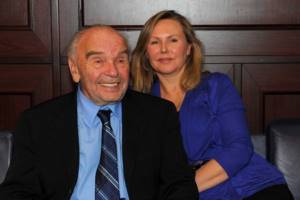
Vladimir Shainsky
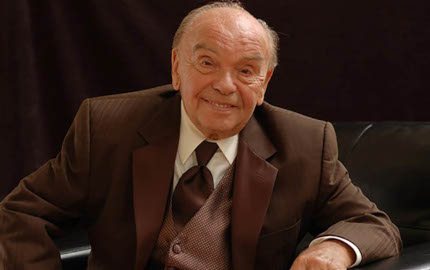
What is the difference between a classical composer and a “folk” one? Perhaps, it is precisely in the recognition of the works he created: the average person, not very knowledgeable in the field of musical art, is unlikely to distinguish Beethoven’s sixth symphony from the third. However, most residents of the post-Soviet space can easily recognize the song of the crocodile Gena about the blue carriage, the tunes of the cheerful lazy Antoshka, who does not want to work in the field, or the melody from the cartoon about the boat visiting the island of Chunga-Changa. The author of all these wonderful works, Vladimir Yakovlevich Shainsky, managed during his long life to write truly immortal compositions on which entire generations grew up. What is the secret of creating such simple and at the same time incredibly deep works? Let's take a look at the biography of Vladimir Shainsky and try to find out.
a short biography of Vladimir Shainsky and many interesting facts about the composer on our page.
short biography
The future composer, actor, singer, violinist and pianist was born in Kyiv on December 12, 1925. Vladimir’s parents were far from the world of music: his father mastered the profession of a chemist, and his mother studied biology, but nevertheless the road to developing his talent was open for the young talent: at the age of 9 he began his studies in playing the violin in the local palace of pioneers, and in 10 he was sent to a special school at the Kiev Conservatory, where Shainsky’s musical abilities began to develop productively.
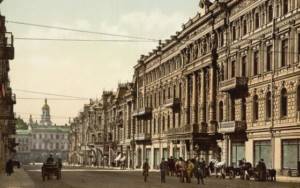
Whatever the plans of the young and promising musician Shainsky for his future life, the outbreak of the Great Patriotic War made adjustments to them. The young man’s family had to move to Tashkent, where Shainsky first tried to continue his studies at the Tashkent Conservatory, and then, in 1943, joined the ranks of the Red Army to contribute to the defense of the fatherland. An eighteen-year-old boy ended up in a communications regiment and went to serve in Central Asia.
The likable young man easily made friends. When Vladimir found out that one of his fellow colleagues was composing poetry, he invited him to write music for it. Thus, the work dedicated to military signalmen became the first among Shainsky’s creations.

The war was coming to an end, and by 1945 Shainsky managed to move to Moscow, where he entered the orchestral department of the Moscow Conservatory. It was here that fate brought the future composer together with the Soviet pop artist, singer and conductor Leonid Osipovich Utesov, with whom Shainsky managed to work side by side for three whole years. For some time, Shainsky even gave violin , without ceasing, however, to constantly compose new compositions.
In 1962, fate brought Shainsky to Baku, where he entered the Hajibeyov Conservatory, this time to the composition department. Having successfully completed his studies, the certified specialist returned to the capital, where his composing career took off sharply. Shainsky has accumulated over 400 songs written for the most famous performers of the USSR at that time.
During his career, Shainsky managed to enter the ranks of the Union of Composers of the USSR, become a member of the Union of Cinematographers and join United Russia. His titles and awards can be listed for a very long time: starting with the title of People's Artist of the RSFSR, Honored Artist and Laureate of the USSR State Prize, and ending with the Order of Friendship and the badge "For Services to Polish Culture", which Vladimir Yakovlevich received in Poland in 1974 .

The conquered heights of the musical Olympus, however, did not help Vladimir Shainsky in any way in the most banal, life situations. Since childhood, striving to become a composer and putting all his strength into moving towards his goal, Shainsky, according to his relatives and friends, was completely unsuited to a lonely life: small everyday troubles or cooking became a real test for him. With all this, Vladimir Yakovlevich could play several concerts in one day without any problems, remaining the same energetic and perky “big child” that those around him were used to seeing.
Virtually nothing is known about Shainsky’s first marriage, except that the composer had no children left from this union. His chosen one was a girl named Asya Bakhish-kyzy Sultanova, whom they met while studying at the conservatory. Subsequently, Asya also became a composer.
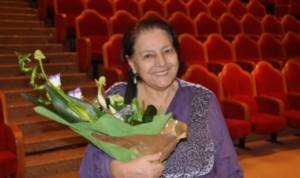
The happiness of his second marriage came to Shainsky only in his fifth decade. His wife, Natalya, was 25 years younger than the composer, but this did not bother the couple in any way. In 1987, Natalya gave birth to Vladimir’s son Joseph, which the newly-made father was incredibly happy about. Unfortunately, Vladimir and Natalya did not have a strong marriage, and the family soon broke up. Despite his parents' divorce, Joseph tried to maintain friendly relations with his father. His father’s influence had no effect on Joseph’s career: he graduated from the Institute of Radio Electronics and moved to Israel.
At the age of 58, the musician, to the amazement of all his relatives, decided to marry for the third time, and even to a girl who was 41 years younger than him. Needless to say, a strong marriage was not predicted for the young family, but everything turned out just the opposite: the lovers lived together for more than thirty happy years. In this marriage, the composer became a father twice more. The second son, born in 1987, was named Vyacheslav. Vyacheslav, so to speak, followed in his father’s footsteps only partially: after graduating from the Institute of Contemporary Art, he first became a sound engineer, and then became interested in teaching music theory courses to young talents in one of the fashionable Moscow audio schools. In 1991, the couple had a daughter, Anna, who later graduated from the University of California with a profession related to IT technology.
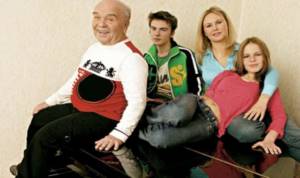
Svetlana (Shainsky’s third wife) became a real support and support for her husband: she was his translator in communicating with foreigners, his manager, his nutritionist and even a nurse at the time when Vladimir Yakovlevich had to undergo a difficult operation. The last years of Shainsky’s life were not spent in Russia: he and his family bought a house in San Diego and moved there. However, the composer did not forget about his homeland, and willingly responded to offers from all over the country to come and give a concert.
Shainsky tried to lead the healthiest lifestyle possible: he went swimming, skiing and skating, and rode a bicycle. Whether at home or away, a cheerful and noisy company always gathered around this man, the inspirer and center of which was himself. Equally easily finding a common language with both adults and children, Shainsky endeared himself to everyone. In his older years, he spoke of himself exclusively as a happy person, to whom old age already allows him to do everything that youth had previously prohibited.
In 2015, American doctors diagnosed the composer with stomach cancer. At the same time, an operation was performed that allowed Vladimir Yakovlevich to live for another two years. On December 26, 2021, the great Soviet and Russian composer passed away.
Interesting facts about Vladimir Shainsky
- Despite the fact that Shainsky became famous mainly as a “children’s” composer, his soul always lay towards more classical and serious music. Inspired by the works of Beethoven, Bizet, Shostakovich and Tchaikovsky during his studies at the Moscow Conservatory, Shainsky wrote his first serious work: a string quartet. Alas, the composer's lack of fame did not allow the world to hear it.
- We can say that fame came to Shainsky as a composer after the song “ Lada ,” which became a hit on the Soviet stage. By the way, the composer’s next work was a song for the cartoon “ Cheburashka ”, known to every Soviet child.
- The dream of the young Shainsky was to become a composer, but either due to the great competition for a place in the composition department, or because of unspoken national prejudices, he was unable to study at the Moscow Conservatory. That is why he left for Baku at one time and fulfilled his old dream there. Soon after returning to the capital, Shainsky became friends with Yuri Entin, one of the main leaders.
- During difficult periods of his life, the musician had to earn his living by playing the violin in a restaurant and arranging other people's compositions.
- One of the musician’s hobbies was underwater hunting, and Shainsky even had his own collection of hunting trophies. During one of these swims, he got lost in a pond and could not find the ice hole. The musician’s life hung in the balance, but he managed to break through the ice with his head and get out.
- In 1986, the composer wrote a song for the famous Club of the Cheerful and Resourceful. Her notes still sound at the beginning of every episode of the KVN program. By the way, in the same year the musician was offered a place on the club’s jury, which he gladly agreed to.
- Zeev Geisel once invited Shainsky to perform his famous songs in Hebrew. The composer initially wanted to refuse, citing a lack of vocal abilities, but then changed his mind. Mammoth ”, “ Chunga-Changa ” and “ Cheburashka were born in the “Hebrew” version of the sound.
- The musician had two citizenships: Russian and Israeli, but lived in the USA for many years. By the way, Shainsky’s family moved to San Diego not by chance: one of the famous American producers called him there after hearing his works in cartoons that his children watched. The result of this accident was that Shainsky eventually wrote music for a number of Broadway productions.
- Shainsky’s composition “I’ll get off at a distant station” was once sung not only by the famous “Gems”, but also by the group “Civil Defense”, very well known in narrow circles, led by Yegor Letov.
Works of Vladimir Shainsky
Developing in terms of music, Shainsky never denied that his work is largely influenced by klezmer motifs: Jewish folk melodic music. However, Shainsky’s irrepressible enthusiasm and childish spontaneity did not allow him to plunge headlong into serious music, and immediately after meeting Entin they went together to the Soyuzmultfilm studio, where animators worked hard on “Merry Carousel.” By the way, the screensaver for “Carousel” was also invented by Shainsky.

Since the seventies, Shainsky’s career as a children’s composer began to gain momentum: he wrote the opera “ Three Against Marabuca ,” two children’s musicals (“ Nils’ Journey ” and “ Az, Buki, Vedi ”), as well as a number of other small works. Following them were works dedicated to the adventures of Cheburashka and the old woman Shapoklyak, as well as compositions for the cartoons “ Little Raccoon ” and “ Shake!” Hello! " However, the composer’s work did not live by cartoons alone: his music was also heard in works of Soviet cinema, such as “ Breakfast on the Grass ”, “ Finist - the Clear Falcon ”, “ Aniskin and Fantômas ”, “ School Waltz ”.

Shainsky's temperament forced him not to dwell on one thing for a long time. Confirming the postulate that a talented person must be talented in everything, the composer began to try himself as a film actor. In two of the three films (“Kyshkin House” and “DMB”) in which he had the opportunity to act, Shainsky played military men. The third film in which the musician appeared was the crime comedy Eight and a Half Dollars by Gregory of Constantinople.
Soldier's songs and prima donna
The composer’s army background was at one time reflected in a number of true soldier’s compositions such as “ Through Two Winters ”, “ A Soldier Walks Through the City ”, “ There Was a Letter ” or “ Come On, Cavalry ”. The musician worked on these songs in tandem with the famous poet Mikhail Tanich.
Vladimir Yakovlevich also had a chance to work with the prima of the Soviet singing stage: Alla Pugacheva. True, this happened even before the writing of “ Lada ” and Shainsky gaining national fame. Shainsky’s original composition entitled “ How to Fall in Love ” on the big stage for the first time in 1966. In addition to Pugacheva, the musician wrote works for such talented pop voices as Lev Leshchenko, Muslim Magomayev, Eduard Khil and Anna German. As for the representatives of the Russian stage, Shainsky’s works were at one time covered by the group “Brilliant”, Valery Leontiev, Stas Kostyushkin, Nikolai Rastorguev and Sergei Mikhalyuk (the latter, however, belongs to the Belarusian stage).
Vladimir Shainsky is a shining example of love of life, resilience, strength and incredible productivity. An example of how just one person can create a part of childhood for many generations, forever entering the hearts of people who have long since become adults, who still listen with pleasure to the song about the blue carriage and the minutes slowly floating away into the distance...
Did you like the page? Share with your friends:
Vladimir Shainsky
Sports hobbies
Shainsky’s passion for sports is the stuff of legends. As a child, Volodya was weak. When the young man was drafted into the army, doctors found a heart murmur and gave him an exemption from military training. Shainsky was seriously touched by this and pushed him to take up running and swimming on his own.
Vladimir began regularly doing pull-ups on the horizontal bar, tempering himself, and doing winter swimming. Heart problems have subsided, strength and energy have increased.
Vladimir Yakovlevich instilled a love of sports in his children. He worked out with them on the horizontal bar, did push-ups, and ran in the morning. At an advanced age, I again heard the cardiologist remark: “You have a heart murmur.” “I was diagnosed with this more than 70 years ago, and I’m still alive,” answered the resilient maestro. Shainsky was interested in chess, spearfishing, ice skating, cycling, and skiing.
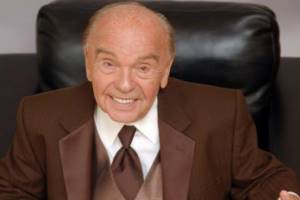
Good mood music
In the 60s, Shainsky became an increasingly popular author of pop works. He composes a lot of music for children.
During this important period for the creative biography of Vladimir Yakovlevich Shainsky, a fateful acquaintance took place with Yuri Sergeevich Entin, a talented songwriter, playwright, and screenwriter. At that time, Entin was the head of the children's editorial office at the Melodiya recording studio.
Vladimir Yakovlevich wanted to ask the poet for help in promoting his finished works, and Yuri Sergeevich unexpectedly invited him to compose songs for children together. Shainsky and Entin took their first joint song about Antoshka, funny and perky, like a red-haired boy, to Soyuzmultfilm. The studio then began producing the multi-part animated anthology “Merry Carousel.” The music for the intro of this program was written by Vladimir Yakovlevich, and a new cartoon created based on the song “Antoshka” was included in the first issue of the almanac.
In the creative biography of Vladimir Yakovlevich Shainsky, a special niche is reserved for children, filled with kindness, light and miracles.
The melodies of the songs “Little Raccoon”, “Caterok”, “Chunga-Changa”, “Blue Car”, “It’s Fun to Walk Together”, “Plant” are remembered the first time because they are light and radiate infectious energy.
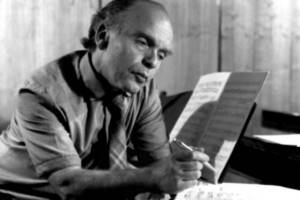
Two more “hits” on a school theme – “What They Teach at School” and “Twice Two is Four” – became favorites in school lineups. Poems for these songs were written by another famous author in the USSR - Mikhail Plyatskovsky.
But Vladimir Shainsky became famous not only for his songs for children. Pop stars of that time - Anna German, Eduard Khil, Aida Vedishcheva, Vadim Mulerman - included the composer's songs in their repertoire.
The undisputed pop hits of that time were the songs “Herbs, Herbs”, “A soldier is walking through the city”, “Lada”, “Parental home”, “I’ll get off at the distant station”, “Don’t cry, girl”, “When the gardens were blooming”, “ Wedding ring", "Two stars".
The creative biography of Vladimir Yakovlevich Shainsky is full of significant meetings and collaborations with talented people.
He wrote his songs based on poems by many famous Soviet poets: Robert Rozhdestvensky, Eduard Uspensky, Rasul Gamzatov, Lev Oshanin, Mikhail Tanich.
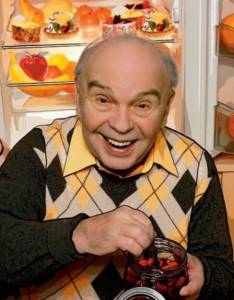
"Adult" songs
The composer also wrote many Soviet pop hits. These works were no longer intended for children, they were not musical illustrations for any films. Some revealed, perhaps, not the most cheerful stories. For example, the song “When the Gardens Bloomed” talks about failed love. At the same time, there is no tragedy in the song; it is filled with some coquetry and irony. Of course, these qualities are inherent in both the vocal melody and the accompaniment - this is the composer’s talent. And how this song was performed by Anna German! You can just listen endlessly...
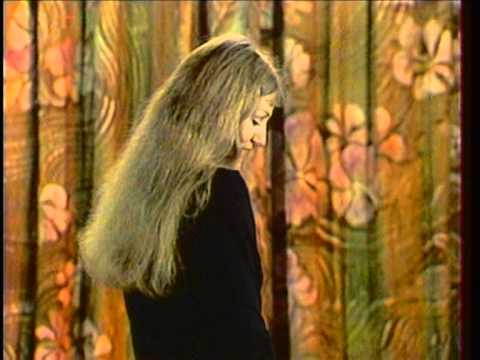
Shainsky and cinema
Work in cinema is also an important page in the creative biography of Vladimir Yakovlevich Shainsky. Possessing multifaceted talent, he did an excellent job with the role of Lesik in the film “Eight and a Half Dollars.” And in the comedy film “DMB” he superbly played a veteran general.
But Shainsky’s contribution to cinema is, first of all, the music for the famous and beloved films “Aurora”, “Aniskin and Fantomas”, “Finist - the Clear Falcon”.
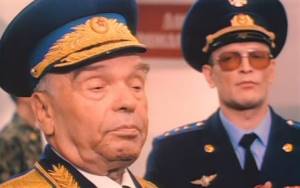
Regalia and awards
Vladimir Yakovlevich Shainsky’s track record includes many titles and awards.
The composer is a multiple laureate of domestic and foreign song competitions, a laureate of the Song of the Year festival.
Vladimir Yakovlevich Shainsky - Honored Artist of the RSFSR, People's Artist of the RSFSR.
He was a member of the Moscow Peace Foundation. Vladimir Yakovlevich was the president of the Foundation in Memory of Composer Arno Babajanyan.
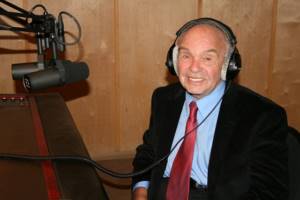
Major musical works
Like many other composers, Shainsky worked not only in the song genre. Sometimes creative people need much larger genres to realize their ideas. In the 70s, Vladimir Shainsky created a number of musical fairy tales and musicals:
- “Az, Buki, Vedi” (1975, libretto and lyrics by Mikhail Plyatskovsky).
- “The Journey of Nils” (1984, based on the fairy tale by Selma Lagerlöf, poems by Robert Rozhdestvensky).
- "The Eighth Wonder of the World" (1985).
- "Elevator" (1987).
- “Gelsomino and the Pirates” (1988, libretto and poems by A. Gangov).
- "According to fairy tales and continents" (1989).
- “Racket” (1993, libretto and poems by A. Gangov).
- “The Groom for the Dowry” (1994, libretto and poems by A. Gangov).
For example, “Az, Buki, Vedi” is a fascinating story about a poor student Fyodor Azbukin, who ends up in Ancient Rus'. All adventures are accompanied by wonderful music by Vladimir Yakovlevich.
Last years
In 2000, the composer moved to live in Israel, and then, in 2004, to the USA (San Diego). At first he lived in two houses (in the USA and in Russia) and was a citizen of the Russian Federation and Israel. From 2013 until his last days, he lived permanently in the United States, struggling with a serious illness.
On the night of December 25, 2021, Shainsky passed away. The genius of children's music was 93 years old. The famous composer was buried at the Troekurovsky cemetery in Moscow.
In a short article it is difficult to fit all the information about the rich creative biography, personal life, and children of Vladimir Yakovlevich Shainsky.
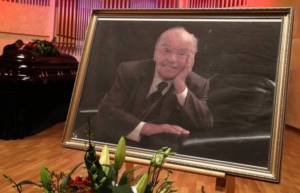
Always cheerful and in a good mood, the composer lived a busy life: he gave concerts, acted in films, hunted, played sports...
The smile never left his kind face and remained with us forever.
